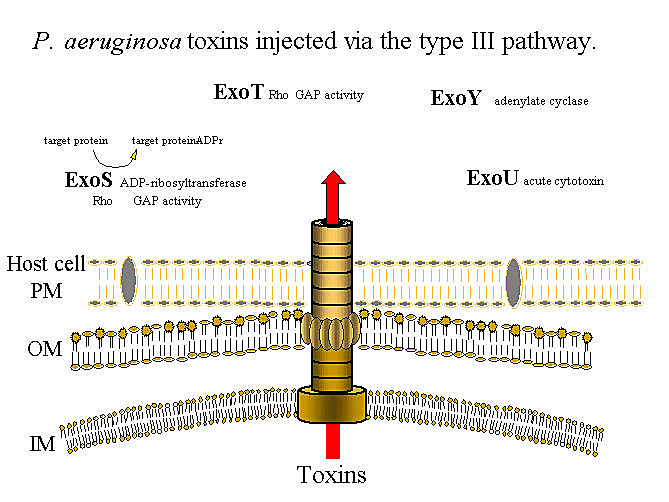
In the image above, from the Yahr laboratory's webpage, the outer membrane of the host (victim) cell on top is pierced by a weapon from the bacterial cell (bottom).
Now we know that they not only make, but also share, weaponry
Living cells, whether freely living single-celled organisms or part of complex multi-celled life including humans, have outer membranes to keep their contents inside and keep threats outside. Bacteria, however, specialise in invading and attacking other organisms. Long before humans developed trebuchets and the like to storm the walls of fortifications such as castles, bacteria developed harpoon-like structures to puncture other cells. The image above is of the “Type III” system for doing so.
Here’s a diagram of one such evolved weapon:

And here’s an actual image from an electron microscope:

A successful strategy can just as well be evolved as imagined
New research documents that individual bacteria not only produce such weaponry for their own use, but that they have also evolved the ability to share weapons with their allies. This shows how the same successful strategies can come about not only by conscious planning on the part of sentient beings, but also by evolution.
The new research, published in the journal Cell clarifies the workings of a more recently discovered bacterial weapons system. Type VI Secretion System Substrates Are Transferred and Reused among Sister Cells. From that link you can watch the video abstract, describing the new results. Science Daily also has a press release about the discovery, which may be a little easier for most people to read.
They Recycle, too!
From the press release:
That closely related bacteria share their proteins through this type of spear gun attack and then recycle the components, has been demonstrated by the researchers for the first time, using the cholera pathogen, Vibrio cholerae. For this, they mixed T6SS-deficient bacteria that lack the proteins needed for the spear gun production with normal T6SS-producing Vibrio bacteria. "The special thing about Vibrio cholerae is that it assembles spear guns all the time and fires them aimlessly," explains Andrea Vettiger, author of the study. "If one of T6SS-defecient bacteria is randomly hit, it disassembles the spear gun to its individual components, the shaft and tip proteins, and reassembles its own functional harpoon.
Anyhow, this was a great combination for me because I find both strategy and biology fascinating!
S. Lan Smith
Kamakura, Japan
September 16, 2016
Thanks to those who provided the images and made them free for reuse.
